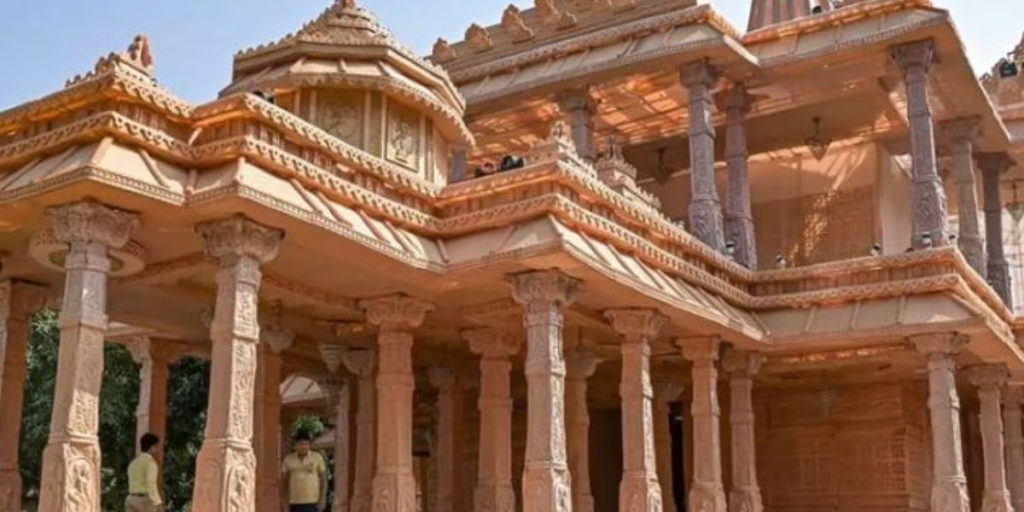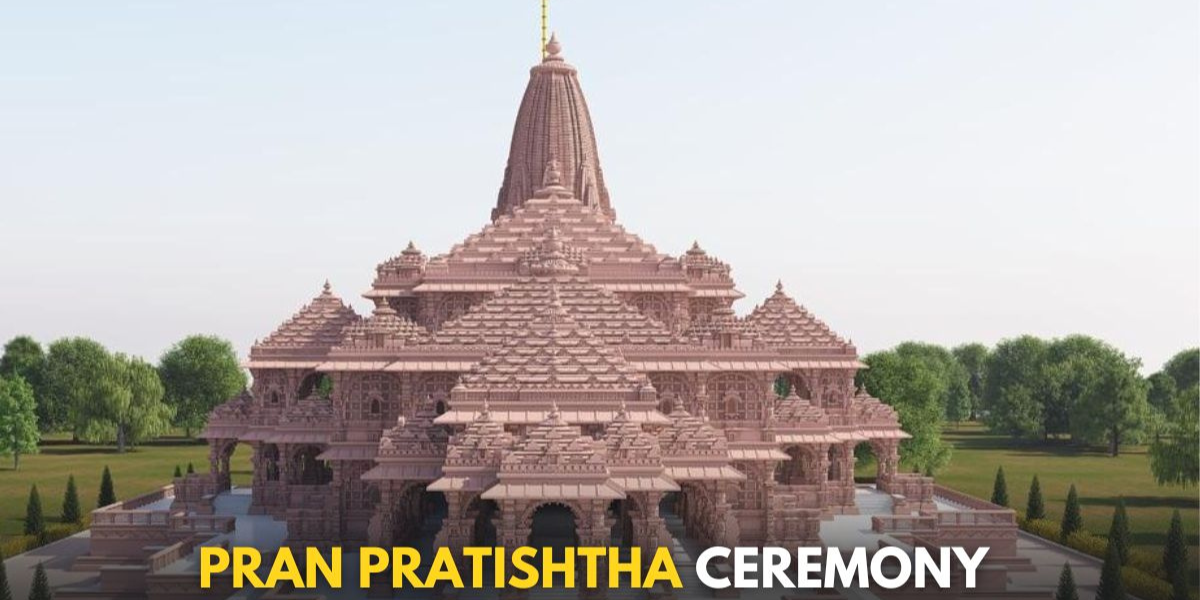As the sacred city of Ayodhya prepares for an epoch-making event, the Ayodhya Ram Mandir is set to witness the culmination of a seven-day ritual known as the ‘Pran Pratistha’ ceremony. This monumental occasion, commencing on January 16 and concluding on January 22, marks the installation of the idol of Lord Ram in the sanctum sanctorum. In this extensive exploration, we delve into the intricacies of the ceremonies, the significance of Ayodhya, and the historical and cultural resonance of the Ram Mandir.

Table of Contents
The Significance of Ayodhya:
Ayodhya, the birthplace of Lord Ram, stands as a symbol of spiritual, historical, and cultural significance for the people of India. This section explores the deep-rooted connection that Ayodhya holds in Hindu mythology, tracing the journey of Lord Ram and the profound impact it has on the collective consciousness of the nation.

Dwadash Adhivas Protocols: Unveiling the Rituals:
The seven-day ritual leading up to the Pran Pratistha ceremony follows the Dwadash Adhivas protocols. Each day is marked by specific ceremonies, symbolizing various aspects of purification, sanctification, and divine connection. This segment provides a day-by-day breakdown, shedding light on the intricacies of the rituals leading to the culmination on January 22.
- January 16: Prayaschita and Karmakuti Poojan
- January 17: Parisar Pravesh of the Murti
- January 18 (Evening): Teerth Poojan, Jal Yatra, and Gandhadhivas
- January 19 (Morning): Aushadhadhivas, Kesaradhivas, Ghritadhivas
- January 19 (Evening): Dhanyadhivas
- January 20 (Morning): Sharkaradhivas, Phaladhivas
- January 20 (Evening): Pushpadhivas
- January 21 (Morning): Madhyadhivas
- January 21 (Evening): Shaiyadhivas

The Culmination: Pran Pratistha on January 22:
The pinnacle of the ceremonies, the Pran Pratistha program, is scheduled for January 22 during the auspicious Abhijit Muhurta of Paush Shukla Dwadashi at 12:20 pm. This section delves into the intricacies of this sacred ceremony, highlighting the auspicious timing and the expected conclusion by 1 p.m. According to Champat Rai, the General Secretary of Shri Ram Janmabhoomi Teerth Kshetra Trust, the muhurat was carefully determined by Ganeshwar Shastri Dravid of Varanasi.
Inclusivity in Tradition: A Unique Approach:

The Temple Trust emphasizes the importance of diverse representation and historic tribal inclusion in the events. This section explores how the ceremonies aim to be inclusive, with a focus on traditions that embrace the diversity of Indian culture. The presence of notable dignitaries, including Prime Minister Narendra Modi, Chief Minister Yogi Adityanath, RSS Sarsanghchalak Mohan Bhagwat, and others, further underscores the grandeur of the occasion.
Arun Yogiraj’s Artistry: Crafting the Idol:
A significant aspect of the Pran Pratistha ceremony is the installation of the idol of Lord Ram. This segment delves into the craftsmanship of Arun Yogiraj, the sculptor tasked with creating the statue. The discussion explores the artistic nuances, the material used, and the symbolic representation of a 5-year-old Lord Ram as a standing statue.
Opening of the Temple Doors: A Momentous Occasion:
Following the conclusion of the Pran Pratistha ceremony, the newly inaugurated temple doors are set to open for the general public from January 23 onwards. This section anticipates the significance of this momentous occasion, symbolizing the accessibility of the sacred space to devotees and visitors alike.
Preparations Underway: A Glimpse into the Grand Event:

The blog post provides a detailed account of the extensive preparations taking place in Ayodhya for the Pran Pratistha ceremony. From logistical arrangements to the expected attendance of dignitaries and people from all sections of society, this section paints a vivid picture of the anticipation and excitement surrounding the event.
Conclusion: A Historic Milestone Unveiled:
As Ayodhya gears up for the Pran Pratistha ceremony, this extensive blog post serves as a guide to understanding the multifaceted dimensions of this historic event. From the spiritual significance of Ayodhya to the intricate rituals leading up to the Pran Pratistha, the narrative weaves together the threads of tradition, culture, and faith that bind the nation to the sacred city. The Ayodhya Ram Mandir stands not just as a physical structure but as a symbol of unity, heritage, and the enduring spirit of a nation.

